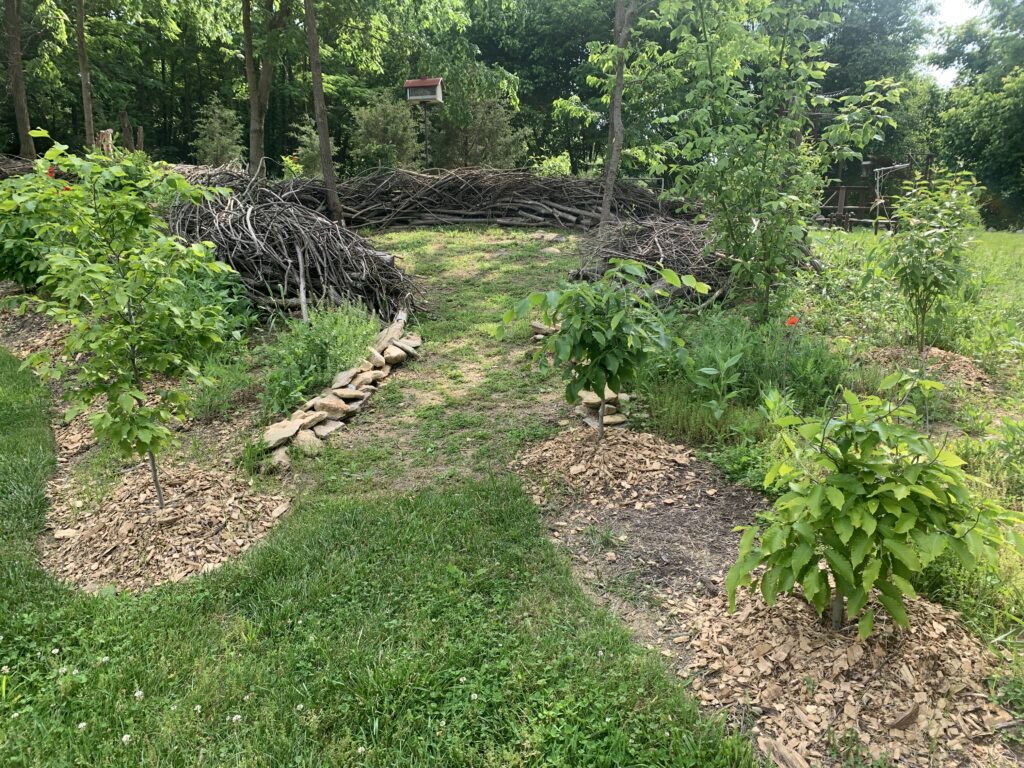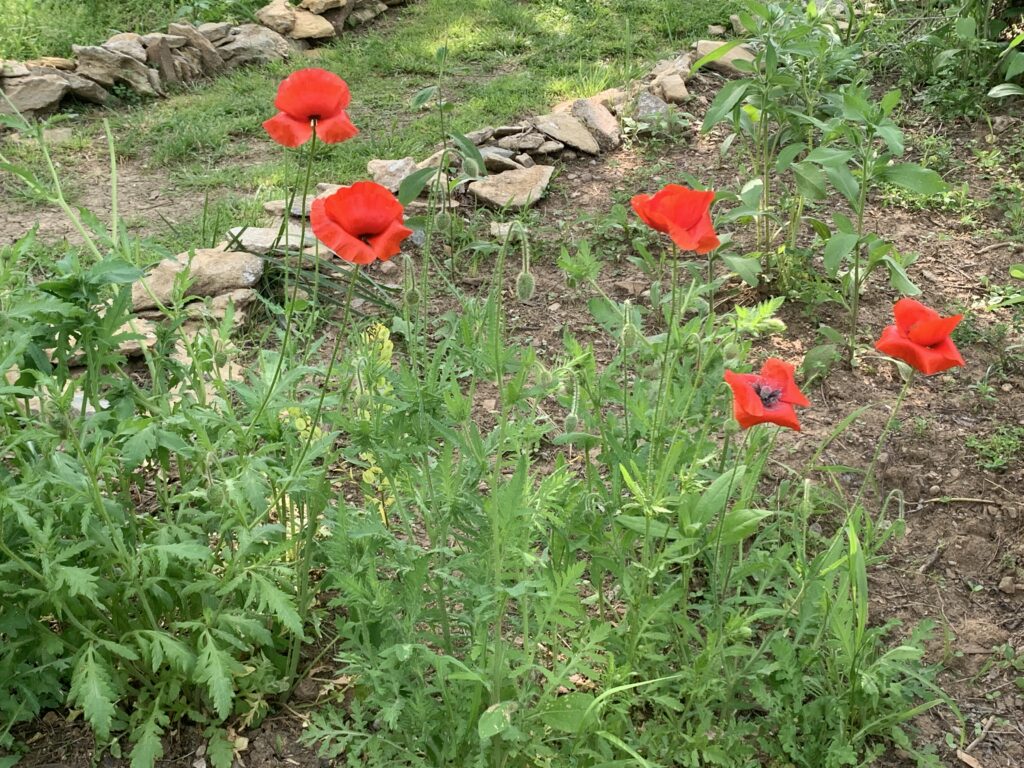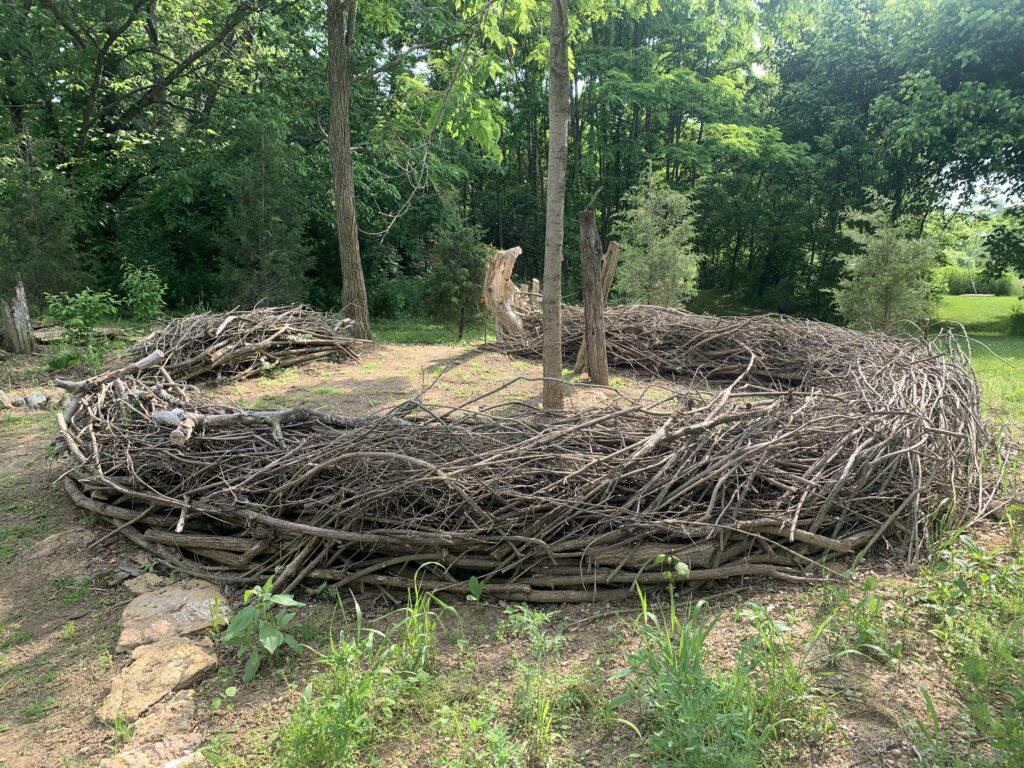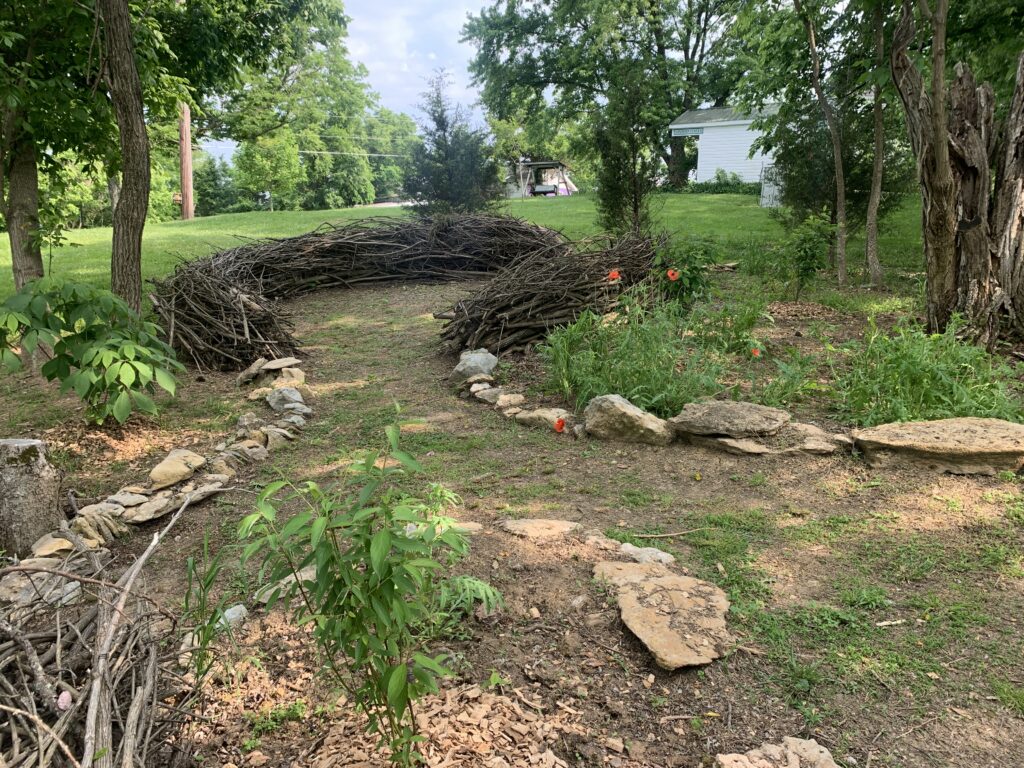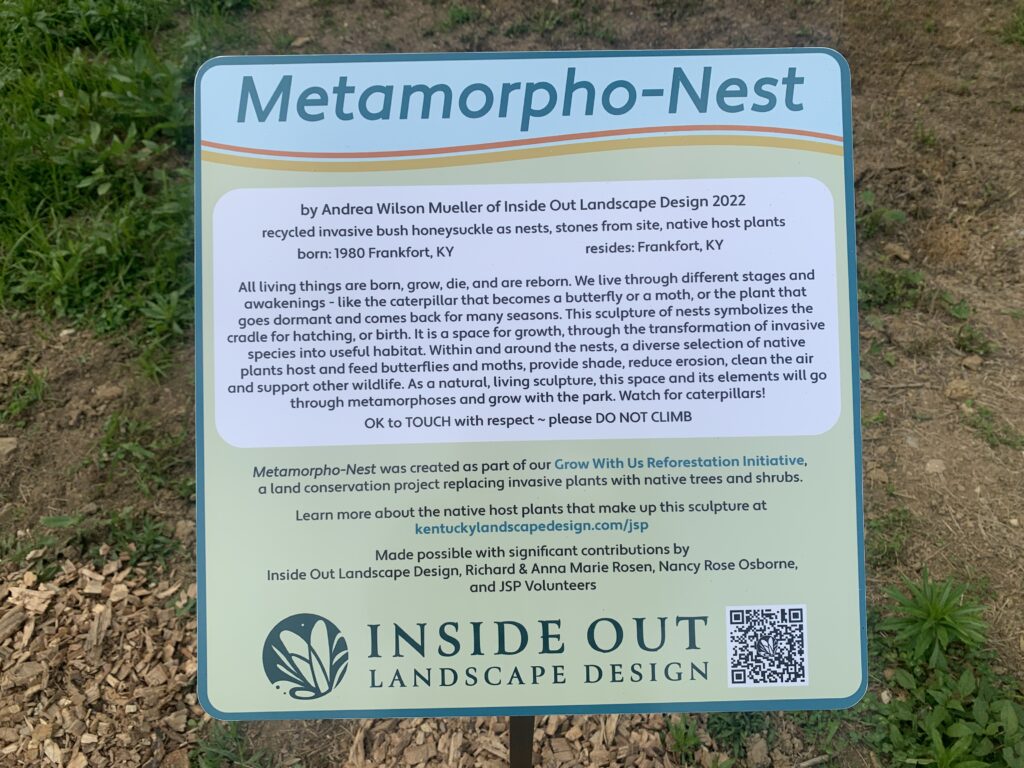Have you visited the newest landscape addition to Josephine Sculpture Park recently? Metamorpho-Nest by Andrea Wilson Mueller and Inside Out Landscape Design is located near the amphitheater. Though still relatively young, the plant material within Metamorpho-Nest is quickly developing along with the seasonal changes. In particular, the red corn poppies in May and June were fantastic! It may take several seasons for the bulk of the plant material to fully develop to the point of producing blooms and fruit. The overall shapes of the trees and shrubs will transform over time and even the bark of the trees will change with maturity.
By now, most plants in our area are fully leafed out and spring bloomers are already beyond their flowering stage. The nights have been getting progressively shorter, signaling some plants to “wake up” and perform for the current season. In our area, the longest day of the year (shortest night) was June 21. Summer-blooming trees like the black gum (Nyssa sylvatica) are developing buds and spring bloomers, like the serviceberry (Amelanchier canadensis) are now providing fruit for birds and other wildlife. The bottlebrush buckeye (Aesculus parviflora), wild bergamot (Monarda fistulosa), black-eyed Susan (Rudbeckia), butterfly weed (Asclepias tuberosa), Joe Pye Weed (Eutrochium purpureum), boneset (Eupatorium perfoliatum) and others are producing blooms that are enjoyed by a range of pollinators. Mother Nature has quite a job of coordinating plant material with pollinator arrival. Nothing in nature is by chance.
In particular, common milkweed is beginning to bloom and adult monarchs have already begun to lay eggs on the plant, ensuring their offspring have food to eat as they develop. The monarchs that are laying eggs do not live here year-round; they come to Kentucky after overwintering in Mexico and areas of the United States south of us. Keep your eye out for them throughout the park. Although the common milkweed (Asclepias syriaca) may not be developed enough yet to bloom at Metamorpho-Nest, there are other examples of the plant throughout the fields. Look closely for tiny white or cream colored eggs on the bottom sides of the leaves, but do not touch! Caterpillars will emerge from these eggs, then feed on the milkweed. Eventually, these caterpillars will develop into butterflies. From tiny egg to beautiful monarch, the entire process takes only around a month. In addition to monarchs, keep an eye out for zebra swallowtail and tiger swallowtail butterflies. You may see hummingbirds too! As its name implies, Metamorpho-Nest will change with each season and year of growth. Stay tuned and visit often to see how it develops as a literal living sculpture.
Also, when you visit be sure to take advantage of the QR Code on the sign. It will take you to a website with more details on the living sculpture, including a list of all of the plants that are included in the design. You can also find the information here: https://kentuckylandscapedesign.com/jsp/

